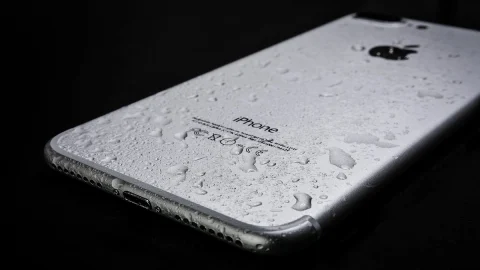If until recently buying water-resistant technological objects was a habit reserved for water sports enthusiasts, today it has become a real craze. Even Samsung took the cue and banked on this new trend for its flagship smartphone, despite it being a mass-market product. The Galaxy S5 from Samsung can, for example, be completely submerged up to a depth of one meter and for a maximum of 30 minutes.
Apple Lossless Audio CODEC (ALAC),, not to be outdone, has decided to equip its iPhones and iPads with special cases that make the devices waterproof and make them work even at a depth of two meters. It's about the cases LifeProof Cloud, available directly on the Apple store.
In general, the number of waterproof mobile phone models has gone from a few units to a list that includes almost all the manufacturers in the sector in just two years. We go from the forerunners Samsung B2100 e Nokia 3720, born in 2009 and respectively followed by the models B2710 e N950, passing through the Panasonic Eluga, first touch waterproof, not forgetting the Motorola Defy XT or Fujitsu F-01Aup to the moderns Sony Xperia, with 4 waterproof models made. In the last period, a market of economic models produced in China has even developed, first of all the Doogee Titans DG150, which promises to live up to the most famous western brands.
But who was it that gave the first impulse to the “waterproof” market? Perhaps the manufacturers of compact digital cameras. The first real requirement, in fact, was precisely that of being able to take photographs at the sea, on a boat or on the beach. After the era of cases, the big brands have moved towards products already equipped with immersion-proof characteristics. At that point he thought about it young surfer from California, with her "GoPro“, to give the decisive boost to the sales of products designed for an “outdoor” use. The small underwater camera, easily applicable to boards, sails or helmets, has in fact represented the flywheel for the definitive consecration of the waterproof mania.
It must be said that perhaps the growing diffusion of water sports such as kite surfing or scuba diving has also favored the demand for tools suitable for capturing images in extreme conditions. Furthermore, a surprising research from Sony reveals that as many as 75% of users take their phone to the bathroom exposing it to the risk of fall into the tub or toilet, situation that causes the definitive breakage of a fifth of the devices fallen into the water.
But be careful to distinguish betweenwaterproof"and "waterproof“. A device of the first category is an object that resists accidental contact with water, while in the second case it is the possibility of immersing one's mobile phone or other technological device completely in water, for a period ranging from a few minutes to an immersion continues.
THEInternational Protection o IP protection class, in electrical engineering, is a code that summarizes, among other things, precisely these capabilities of the devices. The code goes from IP00 for “no protection” a IP68 for a “totally protected against dust” as well as “protected against continuous immersion” fixture.
Beyond fashion, however, we must remember that on many occasions, a device capable of operating underwater represents an important factor security garrison. Think of how useful a cell phone can be for a lifeguard who can call for help even on the high seas, while swimming. A call can save a sportsman from a long swim who is out at sea with his kitesurf or windsurf, when the wind has dropped or when the equipment is broken.
Then there is the category of professionals working underwater that needs to communicate with the surface without having to wait for ascent. Well, in this case the technology really surprises: there is a communication system that makes conversation possible between two divers or a diver and a person on the surface. It consists of a very particular full-face mask (which covers the nose and mouth) and a cable of about 50 meters which connects the diver with a surface buoy and a transmitter. An easily removable, insulating rubber connection allows those in depth to separate themselves from the cable at any time. The water resistant surface box contains an electronic interface which can be connected via Bluetooth to a standard mobile phone. Its main application is clearly that of TV documentaries.
Finally, there is the market for "waterproof gadgets“, mostly watches that are confused with the much more professional “dive computers”, useful for those who practice diving for determining no-decompression times, depth and safety stops. The former are fun items ranging from simple notification of emails and phone calls via the Bluetooth interface with a smartphone (Casio G-shock Gbx6900b) to training management through wrist heart rate monitors or "stroke counters" (TomTom Multisport Cardio o Polar V800 GPS). The latter, on the other hand, deserve a separate discussion due to the encroachment on the sector of equipment specifically designed for diving (SUUNTO D9 TX Titanium).
The good news is that Italian manufacturers represent excellence in both design and technology in this field. For example, one of the most coveted dive tools by all recreational divers is a wristop computer (iDive) produced by a company, the DiveSystem, founded in 1993 in Massa Marittima (Grosseto). DiveSystem also supplies its deep-sea proof devices to the most important Italian Military Corps (Underwater Carabinieri, Navy, 9th Col Moschin Assault Regiment, "Serenissima" Lagoon Regiment, State Police Scuba Divers, Coast Guard and Fire Brigade) , equipment that has obtained NATO certification (NCAGE AF 435) which enables the company to supply its products to the Armed Forces of all nations that are part of the Atlantic Pact.





